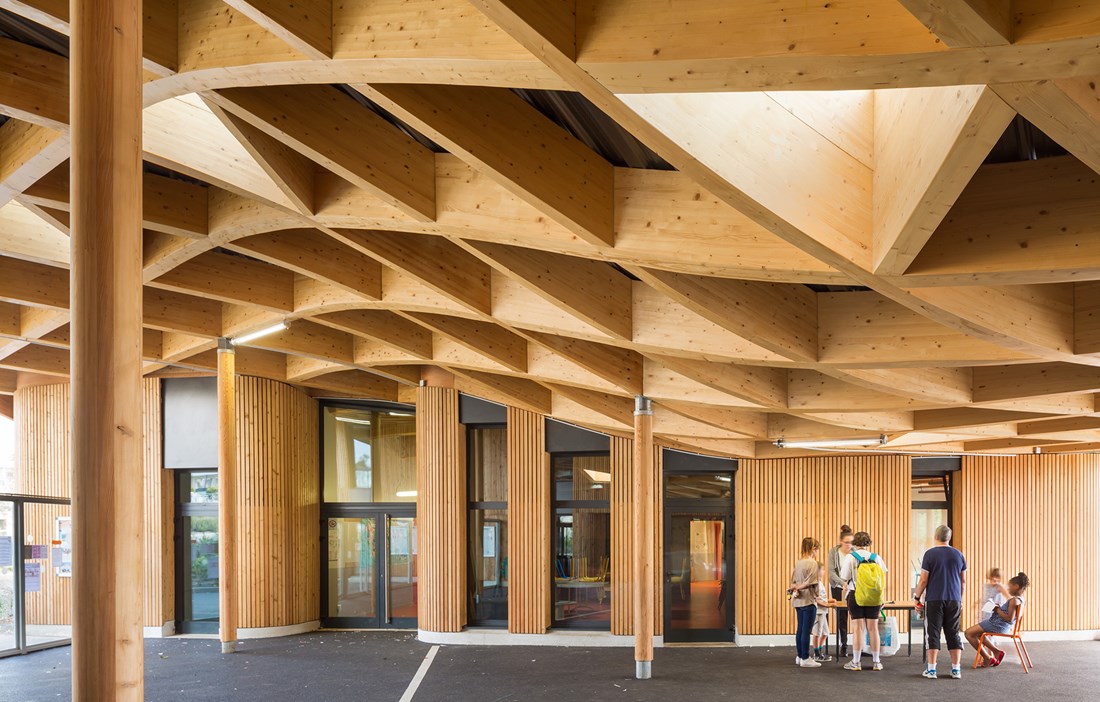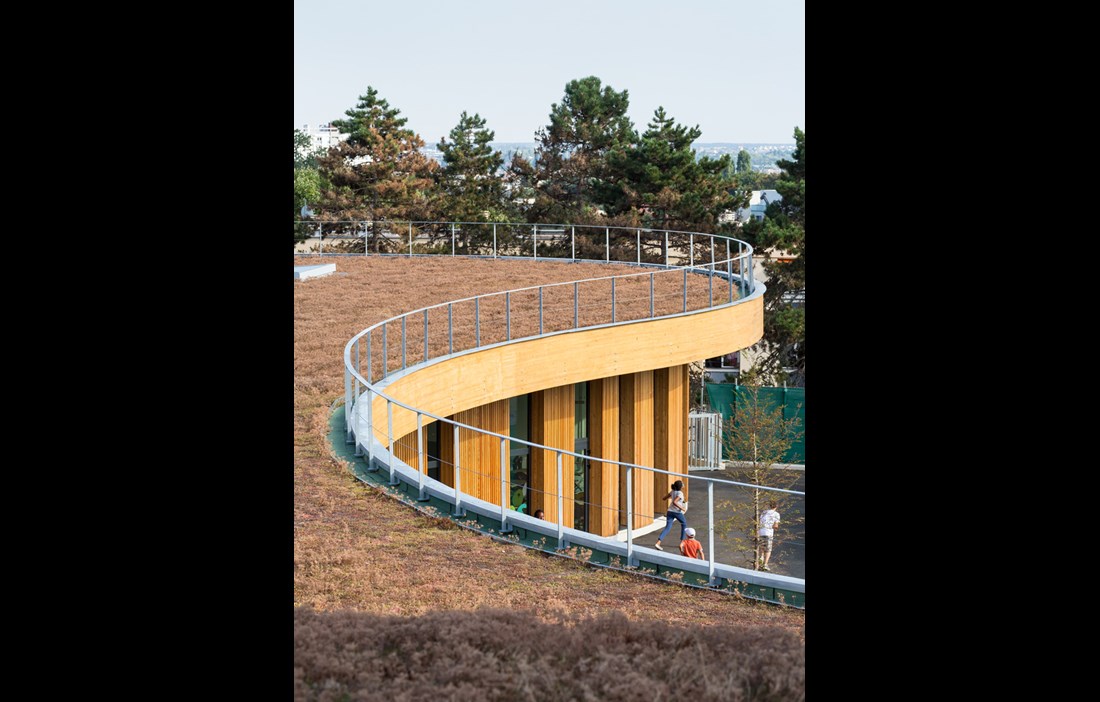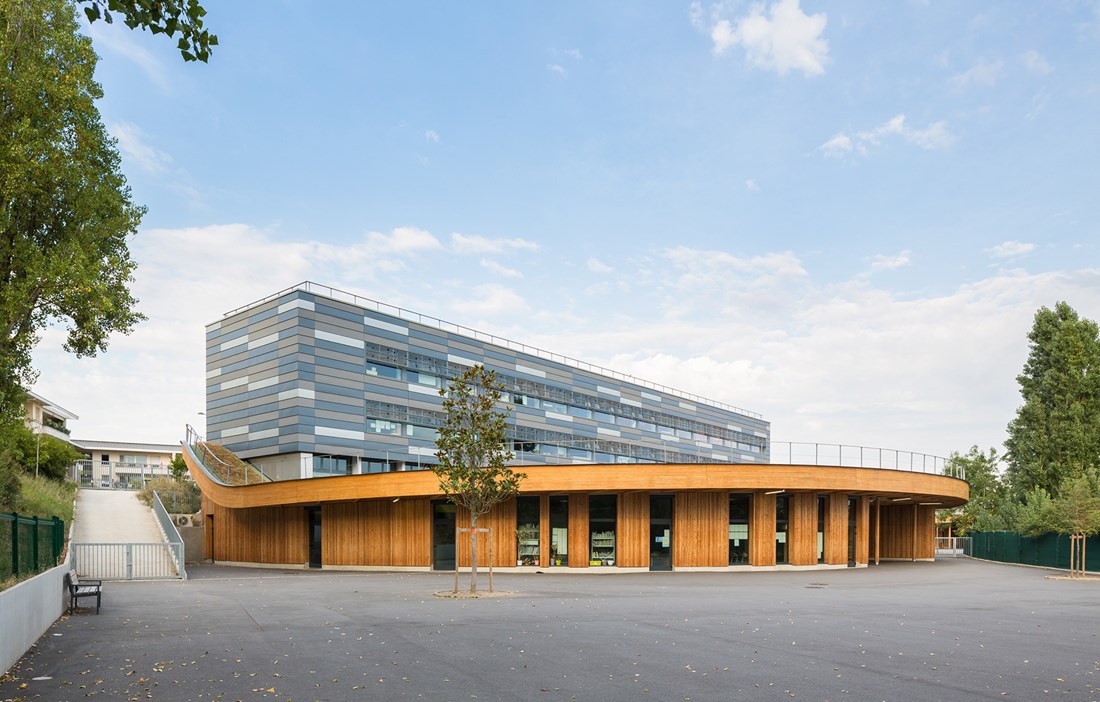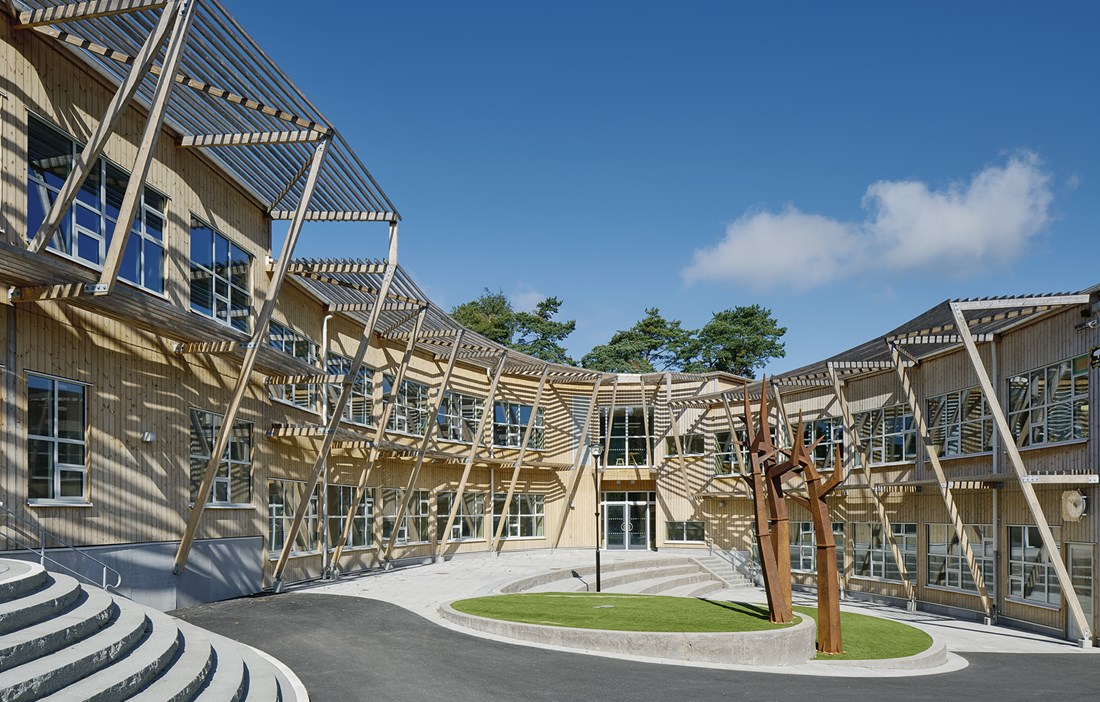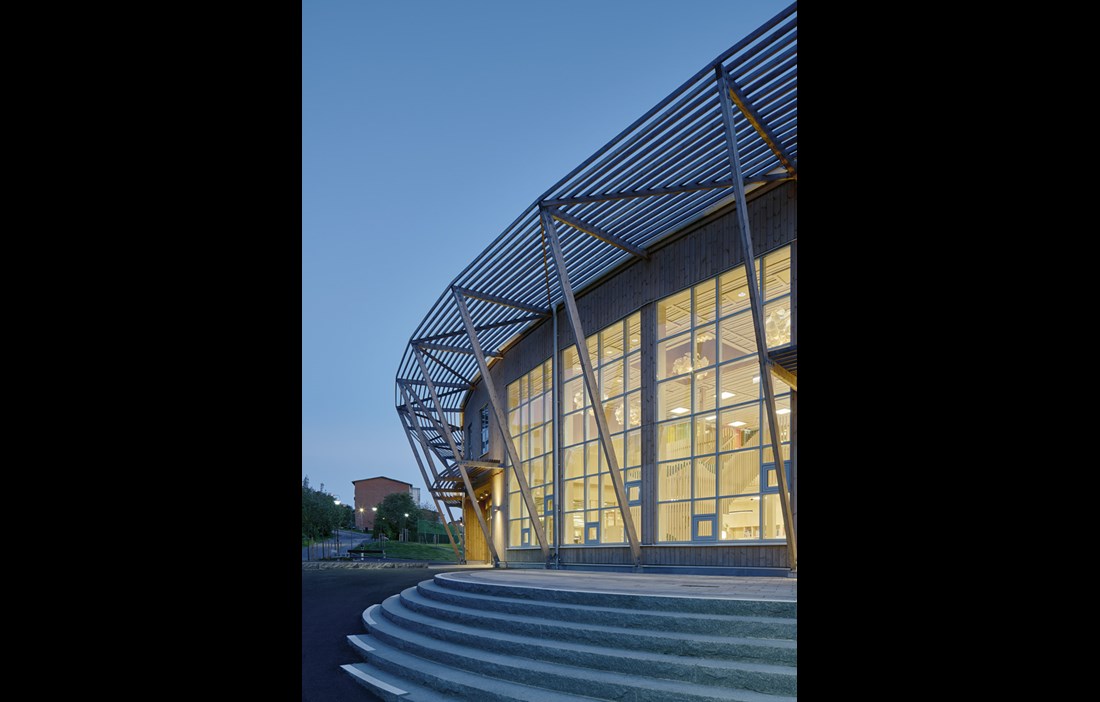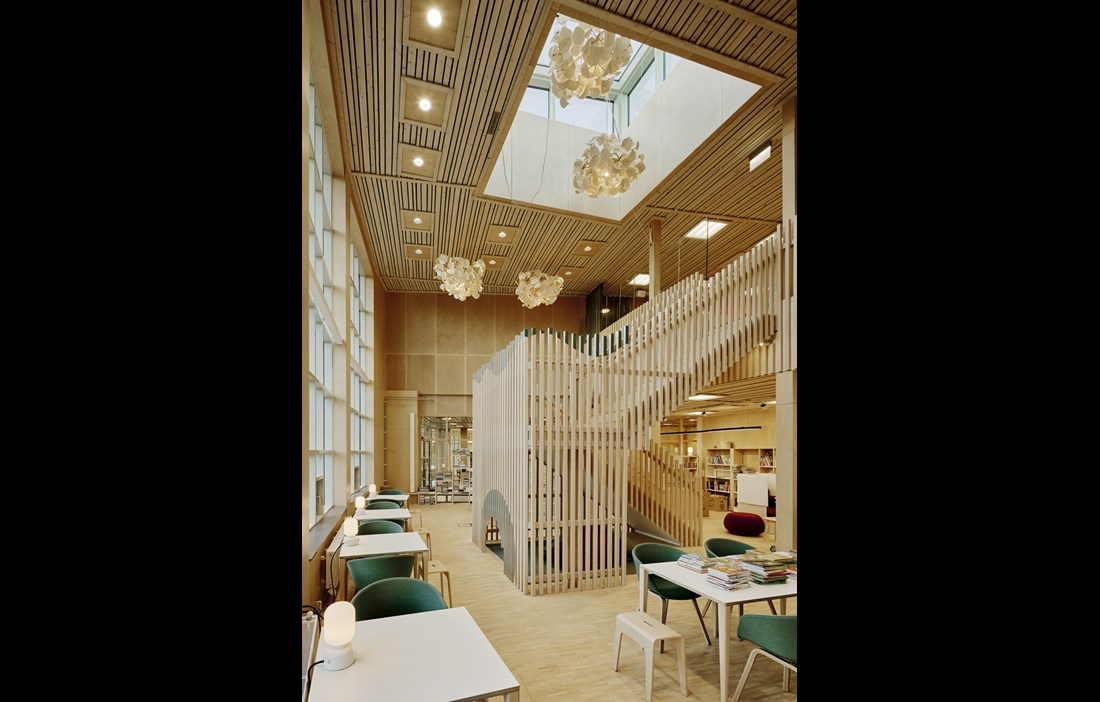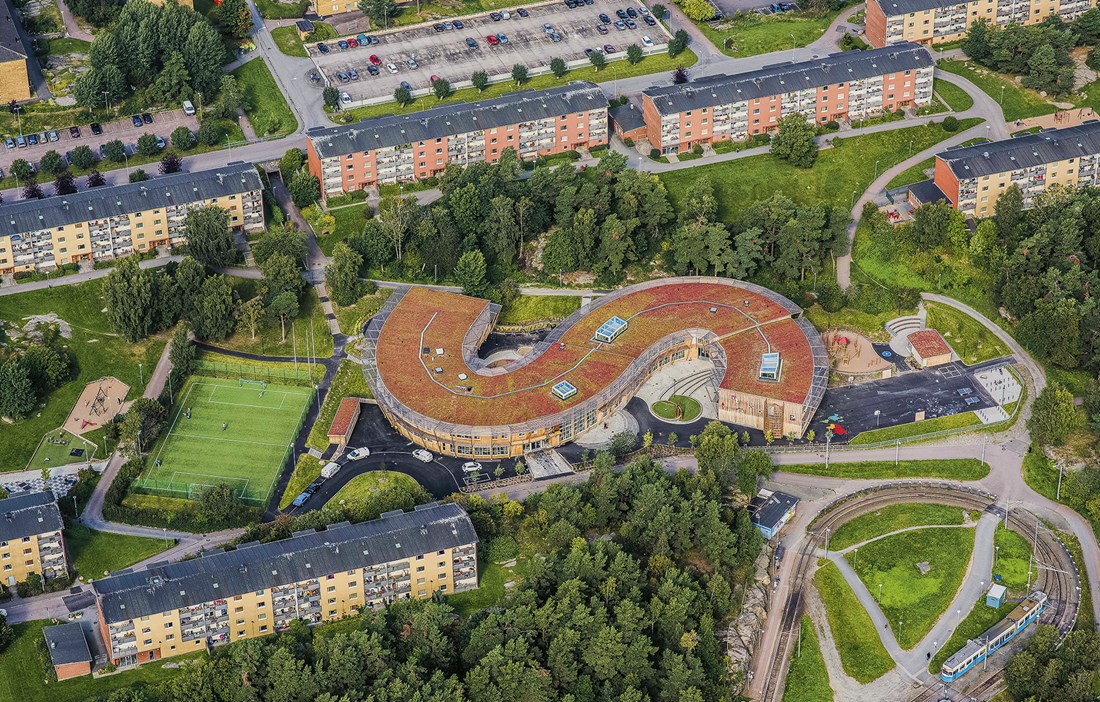Designing a school building often involves having to balance a limited budget with designing a warm and stimulating learning environment for the pupils. One popular solution to this equation is to use wood. The material’s positive effects, both physical and mental, on those who spend time in a wooden building have been proven in a number of studies around the world. Researchers at Joanneum Research in Austria showed that pupils who studied in a classroom with exposed wooden walls were healthier and recovered better overnight than those who spent their days in a traditional classroom. Part of the study involved taking the pupil’s pulse, and those in the “wood room” had an average of 8,600 fewer beats per day per pupil – or six beats per minute.
Châtenay-Malabry, a little over 10 km outside central Paris, is home to the Jules Verne School. Originally the school comprised three separate 1960s buildings, then another building was added in the 1990s as the Paris suburb grew. But after years of patching and mending the old school, the decision was taken to completely upgrade and modernise the whole site. The 1990s building was demolished, and the concrete façades of the older buildings were replaced with a new, more energy-efficient alternative in wood. These were then clad in zinc tiles. All the buildings were also fully refurbished inside. But the main feature was the creation of a large wooden extension to connect the three school buildings together and give them a shared identity and look.
“Wood is a material that gives a warm and comforting feel. We chose to keep it exposed to reflect the school’s eco-aware profile and make it part of everyday life and learning. We’re also proud of the design, with the glulam frame allowing a large span in the extension. This was another reason why we wanted to have the wood on show,” explains Charles Henri Guétin, chief architect at Archi5.
Another key factor in choosing wood was the need for a short and efficient construction time. The school had to remain open throughout the construction phase, so to avoid too much disruption a conscious effort was made to work as quickly and smartly as possible. The construction work was split into three phases, with each phase equating to a school year. So during each period a third of the school was closed, while the other two thirds carried on as normal.
“It was imperative to keep to the schedule. One section had to be completed by the start of the autumn term in September each year. The demolition work took place during the pupils’ summer holiday, when no-one was there. The use of prefabricated panels enabled us to reduce both the construction time and our impact on life for the pupils and the neighbourhood as a whole.
The new building at Jules Verne flows around the three old buildings, which contain the primary school, preschool and sports and recreation spaces. The extension provides more classrooms plus a large new dining hall. The glulam structural frame is environmentally certified by the French association Acerbois, which guarantees that the wood comes from sustainable forests. The roof beams are exposed throughout the newly built section of the school. Using prefabricated wood cladding on the façades gives the whole project a visual lightness. The sinuous roof and façades reinforce this impression, while also ensuring that rain or damp do not collect in the same way as on a building with straight walls The roof design was also born out of necessity. In order to unite the three old school buildings, the extension was forced to follow the local topography. As such, it winds like a green wave down a sloping plot with a fall of 17 metres from east to west.
Another school that also makes use of wood is Landamäreskolan in Hisingen, Gothenburg. Here practically everything except the actual primary structural frame is wood. Just like in the French school, the material’s natural properties are used inside and out to create calm and harmony in the classrooms and communal areas. However, another factor that was at least as important was the durability of wood.
“Our client was very specific about the long-term perspective. This meant a dual focus on sustainability: the building had to be eco-friendly, while also being able to stand up to the stresses that a school is exposed to on a daily basis. The ash floors, for example, can be re-sanded many times over,” says Jürgen Wahlström of Wahlström & Steijner, who designed the school.
The new school building replaced a tired old 1960s building. The educational focus of the school is based on values such as openness and integration, something that the architects wanted to capture in the design of the new school. There are neither corridors nor classrooms in the traditional sense. Instead what the school has is rooms and spaces that can easily be adapted to the number of pupils or the type of lesson. The curved building covers a plot with a slope of five metres. By creating a building comprising two half-ellipses joined to each other in an S shape, the school creeps slowly down the slope like a slalom skier. One advantage of this shape is that it helps to create good acoustics. As well as providing an interesting spatial experience, the light doesn’t bounce around in the same way that it would with straight walls
“We’ve tackled the acoustics in various ways. In the classrooms, we have perforated plywood panels that absorb sound and the ceiling is lined with battens of various sizes that break up the sound. Out in the school’s atrium stand the “Leaf lamp trees”, lamps that comprise a real birch trunk and leaves of a sound-absorbent material.
The school’s design is inspired by the surrounding greenery. After their first visit to the leafy site, the architects knew that they wanted the trees to be reflected in the building. The wooden façade combined with the sedum roof is reminiscent of the trees’ trunks and canopy. The façade is Thermowood, a heat-treated pine that will silver naturally over time. The sedum roof is a feature that the Swedish school shares with the French one. Both schools exploit its benefits in the form of insulation and rainfall retention. The fact that it captures and stores air pollutants also puts it fully in line with the eco-profile of both schools. In addition, both architectural practices are keen to promote the aesthetic qualities of the sedum roof.
“Jules Verne sits among a number of five-storey blocks that overlook the school. We see the roof as a fifth façade, so we made sure it was as attractive and stylish as possible,” says Charles Henri Guétin.
Another structural detail that the two schools have in common is the overhangs that run along the façades. At Jules Verne, these offer protection to the untreated larch façades and allow pupils and teachers to move around outside the building even when it is raining – not least in the inner courtyards that have been created in the new extension. At Landamäreskolan, the overhangs are ribbed and serve as sun screens. The wooden battens are made from Thermowood, like the façade, and are designed to let in the low winter sun while screening off the higher summer sun.
Both Archi5 and Wahlström & Steijner have a clear focus on sustainability that runs like a thread through their projects. Building schools where sustainability is a key aspect of the teaching is a perfect match. The use of wood has allowed the architects to stay true to their values concerning architecture and the environment.
“The new building gives the whole complex a coherent look and identity, featuring a warm and supportive environment that the wood helps to create,” comments Charles Henri Guétin.
Jürgen Wahlström emphasises the many aesthetic possibilities that wood offers.
“It’s a fantastic material to base a design around, whether it’s for façades, interiors or fittings. Working with wood provides incredible architectural freedom,” he concludes.
Read more on Archi5 and Wahlström & Steijner
TEXT Erik Bredhe


